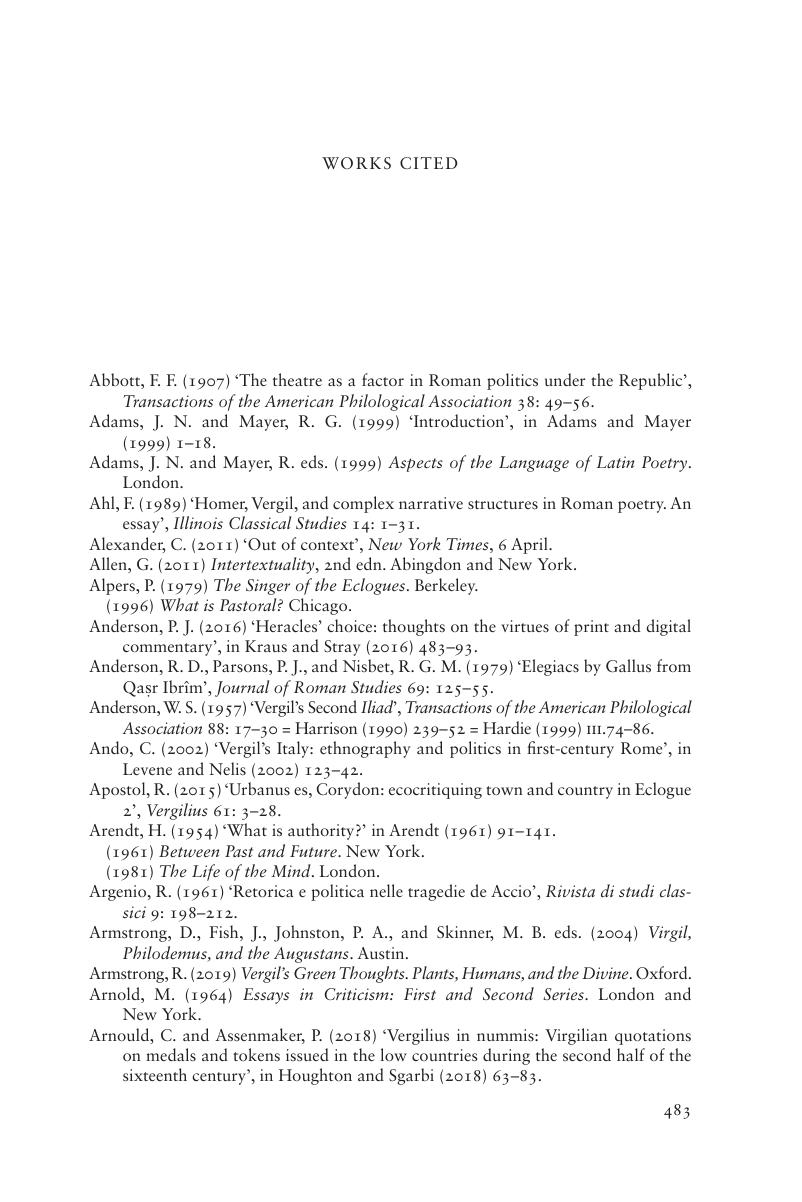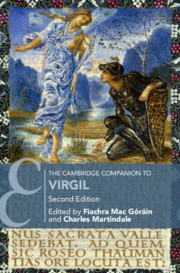Book contents
- The Cambridge Companion to Virgil
- Frontispiece
- The Cambridge Companion to Virgil
- Copyright page
- Contents
- Illustrations
- Contributors
- Preface to the Second Edition
- Preface to the First Edition
- 1 Introduction: ‘The Classic of All Europe’
- Part I Receptions
- Part II Forms
- Part III Contexts
- Part IV Themes
- Envois
- Dateline
- Works Cited
- Index Locorum
- Index Nominum et Rerum
- Cambridge Companions to …
- References
Works Cited
Published online by Cambridge University Press: 06 July 2019
- The Cambridge Companion to Virgil
- Frontispiece
- The Cambridge Companion to Virgil
- Copyright page
- Contents
- Illustrations
- Contributors
- Preface to the Second Edition
- Preface to the First Edition
- 1 Introduction: ‘The Classic of All Europe’
- Part I Receptions
- Part II Forms
- Part III Contexts
- Part IV Themes
- Envois
- Dateline
- Works Cited
- Index Locorum
- Index Nominum et Rerum
- Cambridge Companions to …
- References
Summary

- Type
- Chapter
- Information
- The Cambridge Companion to Virgil , pp. 483 - 530Publisher: Cambridge University PressPrint publication year: 2019



